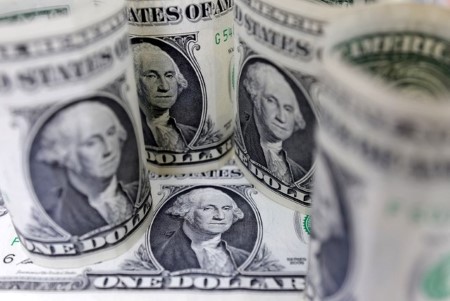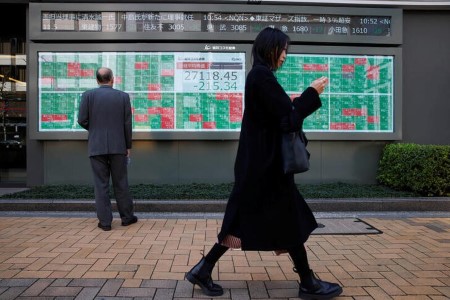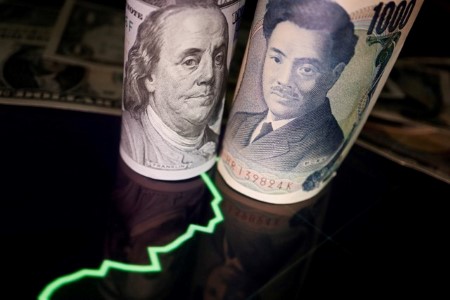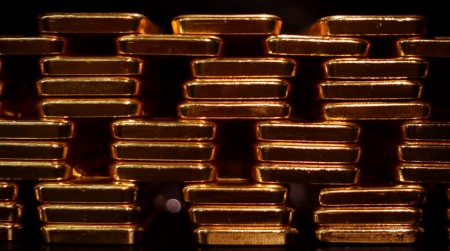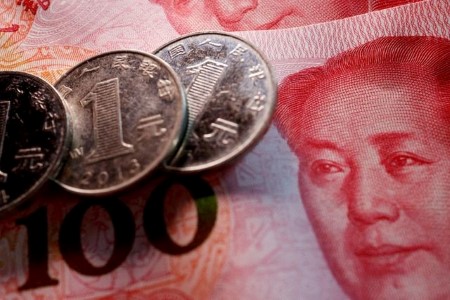LONDON/SINGAPORE, Aug 17 – The dollar hovered around a two month-high on Thursday after the Federal Reserve Minutes left the door open for more rate hikes and data this week pictured a resilient US economy.
The Norwegian crown rose from six-week lows against the dollar and the euro on Thursday after Norges Bank raised interest rates, as expected, and said it was likely to hike again in September.
The US dollar index was 0.05% lower at 103.41, after hitting a two-month high of 103.59.
The greenback has drawn support from a recent run of resilient US economic data, which reinforced the view that interest rates will remain high for some time.
Data on Wednesday showed that U.S. single-family home building surged in July and permits for future construction rose, while a separate report revealed production at U.S. factories unexpectedly rebounded last month.
“We’ve got the U.S. staying really resilient still, under the weight of high interest rates,” said Carol Kong, a currency strategist at Commonwealth Bank of Australia (CBA).
In the meantime, inflation – which is stubbornly above the 2% target – will encourage the Fed to “maintain monetary policy at a restrictive level,” she added.
Minutes of the Fed’s July policy meeting showed officials were divided over the need for more rate hikes last month, citing the risks to the economy if rates were pushed too far.
Against the dollar, the Norwegian crown was last up 0.4% to 10.5750, having fallen to as low as 10.66 earlier in the session. It rose 0.3% against the euro to 11.5000, after touching its lowest since July 10.
Elsewhere, the yen edged 0.1% higher at 146.14 after weakening to 146.565 per dollar, its lowest level since November, having come under renewed pressure as a result of interest rate differentials between the United States and Japan’s ultra-low rate environment.
The Japanese currency has come under close watch since it touched the key 145 per dollar level for the first time in about nine months last Friday, crossing into a zone that sparked an intervention by Japanese authorities in September and October last year.
AUSTRALIAN DOLLAR
The Australian dollar sank to a nine-month low, taking its New Zealand counterpart along with it, after data showed that Australia’s employment unexpectedly fell in July while the jobless rate ticked higher.
The Australian dollar was last 0.36% lower at USD 0.6401, having tumbled more than 0.9% to a trough of USD 0.6365 following the employment data release.
The softer reading stoked speculation the Reserve Bank of Australia (RBA) might be done hiking interest rates.
“Cracks are finally appearing in the employment data, and that should clear up any doubt over whether the RBA is done hiking,” said Matt Simpson, senior market analyst at City Index.
“They’re done at 4.1% as far as I’m concerned now, with persistently weak data from China and easing from the (People’s Bank of China) adding to the case of a peak rate.”
The kiwi also touched its lowest level since November and was last down 0.2% to USD 0.5928.
The two antipodean currencies, often used as liquid proxies for the yuan, have also taken a beating over the past few sessions as a result of the darkening outlook over China’s economy.
The offshore yuan hit a nine-month low of 7.3490 per dollar, while its onshore counterpart similarly weakened to a nine-month trough of 7.3113 per dollar.
The euro was flat at USD 1.0875, after falling to a six-week low at USD 1.0862. Sterling was flat against the euro at 85.40 pence, after surging to a one-month high on Wednesday on British inflation data.
Despite a sharp drop in Britain’s headline inflation rate, key measures of price growth monitored by the Bank of England (BoE) failed to ease in July, boosting bets the BoE will keep rates higher for longer.
(Reporting by Joice Alves in London and Rae Wee in Singapore; Editing by Angus MacSwan)







 DOWNLOAD
DOWNLOAD




